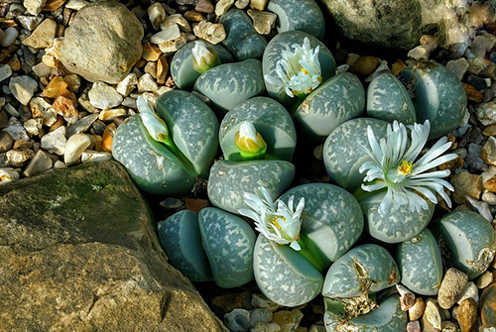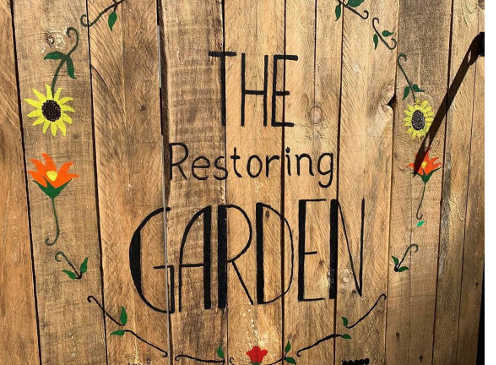Ultimate guide to good looking turf
Turf management is a scientific process and a perfectly manicured lawn takes time, dedication, consistency and understanding.
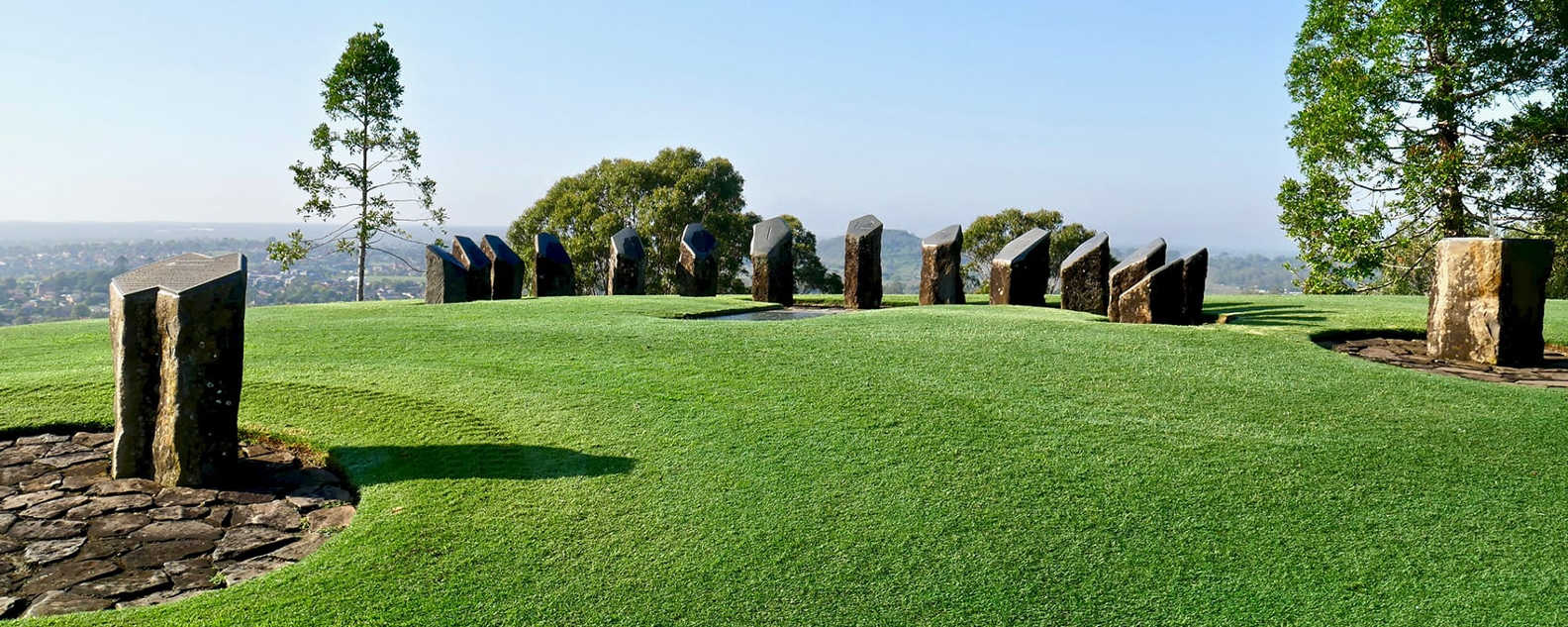
This might sound like a daunting task but great turf is achievable and isn't as complicated as it may seem.
As you walk around the Australian Botanic Garden Mount Annan you will notice our main turf areas look immaculate, year round. I will share with you some simple tips so you can achieve this too but first things, first - here are the basic elements of great turf that we will explore in this blog:
- Your grass types;
- Understanding your soil and how it behaves;
- Know your local environment (temperature, rainfall);
- Water – and only when you need to;
- Mow frequency and choosing your turf height carefully;
- Fertiliser (and how to do it responsibly);
- Thatch management;
- Treating weeds, pests and diseases.
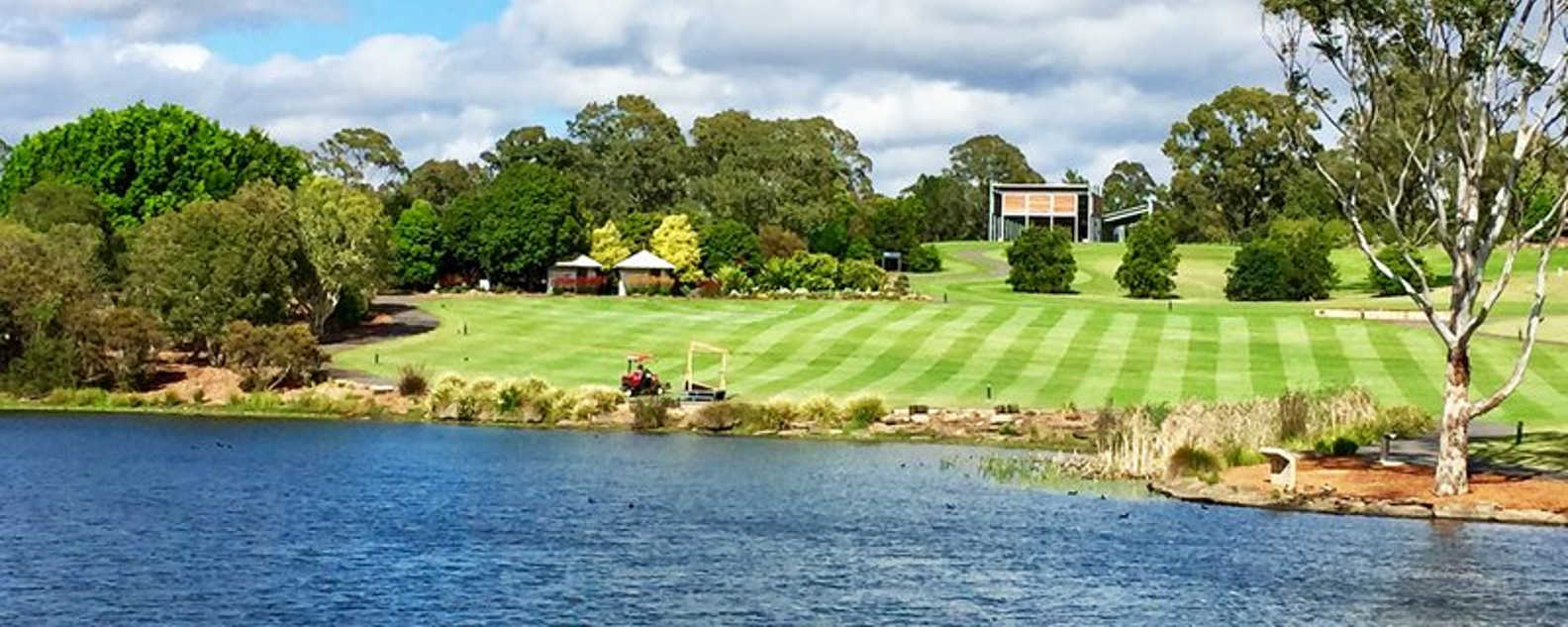
Turf management is led by several environmental factors.
Three turf types at the Garden
The horticulture team at the Garden tends to 416 hectares of grasslands, woodlands, rainforest and horticulture displays - all of which are totally compromised of native plants. The three main turf species we maintain are Couch, Kikuyu and Buffalo. Each grass has strengths and weaknesses which are important to know when setting up or considering which turf program.
We manage these lawn areas with the environment in mind and prefer to see a little bit of damage from time to time from pests and diseases rather than use chemicals to control them. It is a similar approach to what is achievable at home with precise but minimal input.
Even though Mount Annan is considered part of the Sydney region, the environmental conditions are very different.The Garden is in a rain shadow which results in far less rainfall than most of Sydney, especially areas along the coast. It is also consistently hotter and also colder in winter than Sydney. All of these environmentally factors greatly change our maintenance needs.
The video below is a short snapshot of the diverse work the horticulture team does in a day.
It's just dirt, right?
Soil is an extremely complex subject; however, we can keep it simple by just asking two questions. What type of soil do you have? How deep is your soil profile?
These are the two simplest things you need to know about your soil. The easiest way to find out is by sticking a shovel into the dirt and having a look at your soil. While you are there, you can test your pH with at home DIY kit which can be found at your local nursery or hardware store. The pH should sit between 6 and 7 but if it's out of that range you can easily adjust it.
If your soil is from the local landscape supplier and it was called a turf loam, turf underlay or even a topdress mix - the soil will most likely be a sandy mix with compost or manure. If it is ‘fill soil’ than it will be likely clay based.
A simple soil check will help you put together a turf management plan at home.
Check your soil
If you have a sandy soil it will not hold moisture or nutrients well but it will have better drainage than clay soil. Clay on the other hand holds moisture and nutrients, sometimes too well making it not accessible to the plant's root system.
Most people think that clay sounds like the best option, and it is good soil, just not for lawns. The biggest problem with clay as a soil for turf is that we walk, run, jump on it and the millions of fine particles that make up clay will compact over time.
When clay compacts, turf roots can no longer get access to the oxygen or water, starving the plant. Soil is so important to get right when creating a new lawn. Getting it right means you can have a healthy lawn that requires very little effort from you.
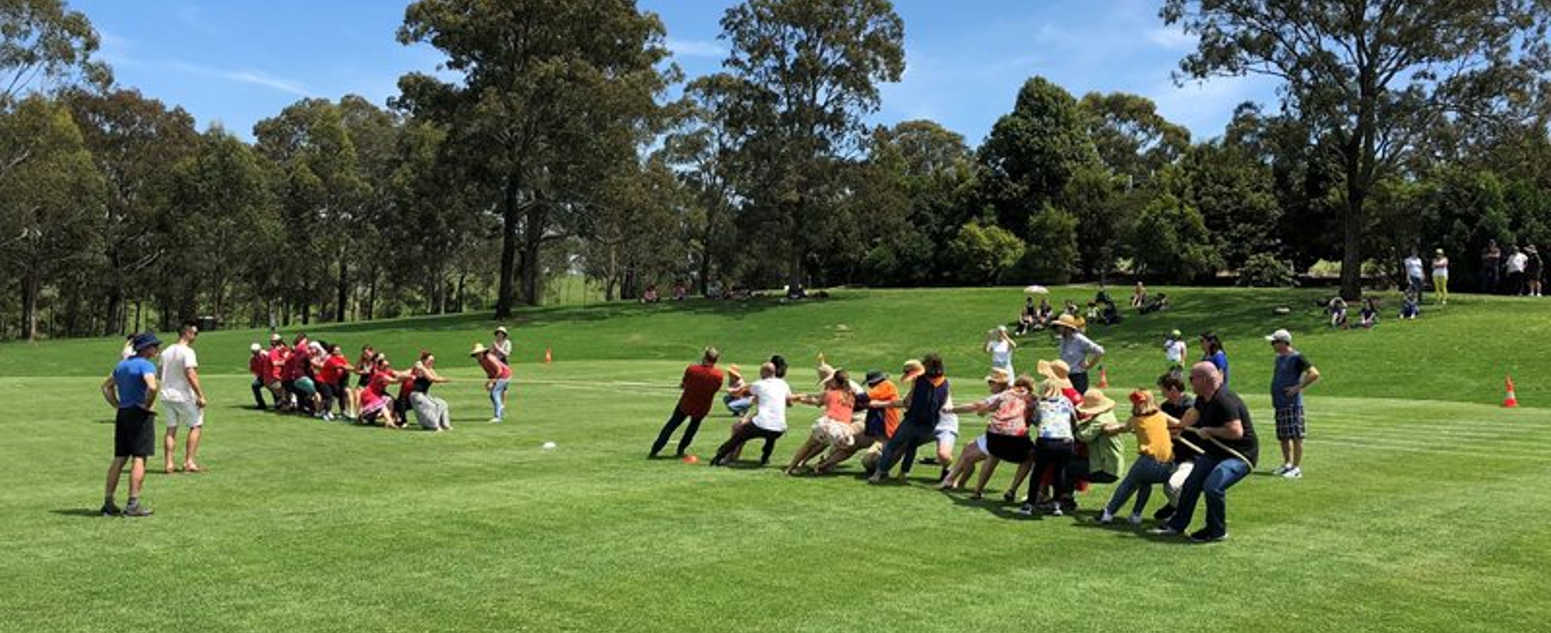
Clay soil compacts over time with use - and who can resist running, jumping and walking on good turf.
Water is precious, don't waste it
When it comes to water you need to monitor your plant. Many grasses possess great drought tolerance and can survive for long periods of time with no water. The more stress we put on our turf, whether it be from mowing too low or over-using the space, means more water will be needed for it to recover. Plants need water to take in nutrients, so without it the plant will dry up and die.
The best advice for watering turf is to do it infrequently and deeply but only if your soil allows this. If your turf doesn’t take to this approach, try to improve the structure of your soil so water can infiltrate into the root zone.
Soil structure
You can change the structure of your soil a few diffent way but aerating it and adding river sand to clay based soil is a popular method. If it’s sandy soil and it isn’t holding moisture add a fine grade green-waste compost. Also adding calcium (gypsum) can be beneficial in improving soil structure and the use of a good wetting agent will help get the most out of your watering, essentially aiding in getting it to where it should be in the rootzone.
If your root zone or soil is shallow you will need to water more frequently but apply less when you do. A good soil, for the home lawn, should see you needing to water only one to two times per week in summer - the rest of the year it is as needed.
This could range from one watering per fortnight, every three weeks or on a monthly schedule. The frequency depends on rainfall and your individual circumstances but remember, water is precious so don’t waste it. Be water smart.
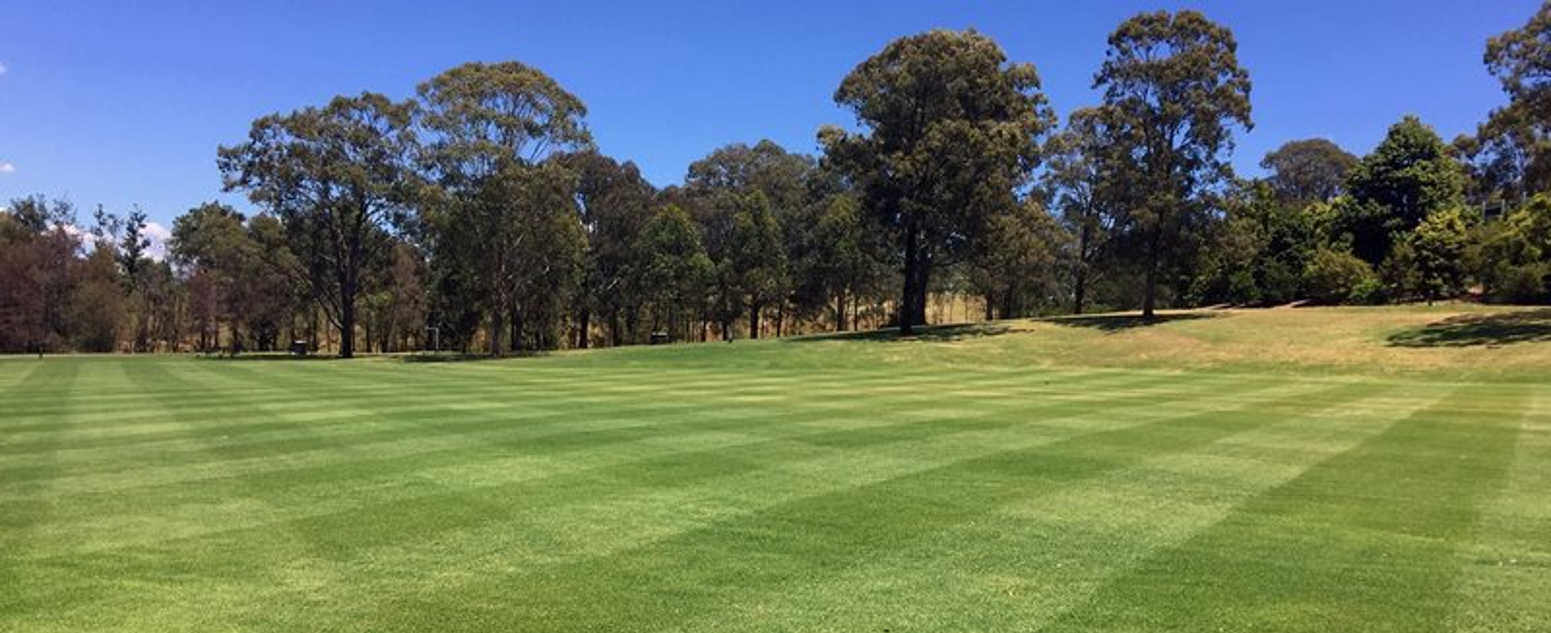
Water deeply and infrequently if your soil allows it.
Mow often and to your desired height
Keep in mind the lower you go the more you need to mow, water and fertilise your lawn. So, if you don’t need a putting green lift the height a little. Each grass type has a range of optimal turf heights but there isn't a right and wrong option, each height brings different maintenance requirements.
I think everyone has experienced buffalo lawn mown on the highest setting which makes it spongy and impractical. Keep it practical for what your needs.
When you mow your lawn, it uses energy to recover. Taking off too much of the leaf in one go will stress the plant and take away a lot of its ability to photosynthesis. Mowing too often also requires the plant to use stored energy to recover and regrow.
The scientifically proven '1/3 rule' shows grass responds much better when you only mow 1/3 of the leaf. Removing more than this will stress the plant and it will essentially shut-down for a period of time which results in the loss of producing, using and storing energy.

Check out the three types of turf we have at the Garden and tell us your favourite.
Fertilising is easier than it used to be but can be overdone
There has been a lot of advancements in the technology used in fertiliser products which offer a quality slow release (coated) fertiliser for use at home. These fertilisers range from a 6 week release to 12 weeks.
Follow the correct rates and only apply at key times of the year. Most soils do not require the addition of phosphorous so apply no phosphorous fertilisers or low amounts. I see a lot of people over fertilising which has a bad outcome in natural areas and wetlands.
Apply a high N fertiliser at the beginning of spring as the grass begins to grow and again at the end of spring. This will aid its spring ‘green up’ and feed your lawn through summer.
During Summer your grass, with the right soil moisture, will grow fast and use a lot of nutrients. By using a slow release fertiliser you are supplying the turf with the major nutrients it will use in high quantities throughout summer.
While fertiliser is important it can be overdone and result in rapid growth which will scalp your lawn by accident. Luckily most turf grasses recover well, however this takes a lot of water to come back from.
Have you ever noticed someone’s lawn grow rapidly after rain (particularly Kikuyu) only to look dead a month later? Nutrients from fertilising can only be taken up by the plant in a water solution and with rapid growth you need to mow multiple times in the week and most people don't do that, scalping and injuring their lawn this way.
This means with no rainfall or water these nutrients are not being taken up by the plant. Once the hot summer temperatures ease off, fertilise again with a high K (potassium) slow release fertiliser. I like products that offer an N-P-K or around 20-0-20. So match the N and K. This can be done throughout the year if K is low in the soil. K plays a vital role in strengthening cell walls in the plant and ‘hardening’ the plant to help it endure winter.
Kikuyu grass is a popular choice for sunny lawns and can found at the Garden.
What's thatch?
Thatch is the layer of organic matter between the soil and the base of the grass plant. It is a combination of both living and dead plant material. Leafy plant material like clippings are easily decomposed by micro-organisms.
Decaying stems, crowns, stolons and rhizomes are not so easily decomposed. This plant material sits above the soil layer and micro-organisms can’t break it down easily as they live in the soil. Physical removal and topdressing are two techniques to remove thatch. Physical removal will either be by scarifying (verticutting), aerating and scalping.
Topdressing brings the thatch into contact with the micro-organisms which helps complete the process. It's not as easy as just throwing soil or sand on top of thatch because the decomposing plant material contains lignin that doesn't decomposed easily, so remove as much thatch as possible physically first. Then topdress to assist with further removal.
It is also important to note a bit of thatch is a good thing. It provides a cover over the soil and helps retain moisture and creates a softer feel to the turf. It’s tricky to balance between a little and too much thatch.
Buffalo grass at the Australian Botanic Garden Mount Annan.
Managing weeds, pests and diseases
The first thing you need to know about your lawn in relation to weeds, pests and diseases is that a healthy lawn doesn’t require a lot of work and often doesn’t suffer from too many issues.
If your lawn in healthy you won’t get many weeds. It will be too tight, dense and thick meaning weed seeds won't germinate because of the lack of sunlight.
A healthy lawn can recover from pests so you shouldn't need to put chemicals on your lawn every year. I see so many people wasting money on insecticides, especially for the common black beetle.
Monitor your lawn before grabbing chemicals. It takes a large population of black beetles, billbug and army worms to severely damage a lawn. However, damage can be done quickly so monitoring closely is essential.
I have buffalo grass at home which can handle pests really well. There is black beetle, billbug and mole crickets in my turf however they make a very small impact. If you need to spray insecticides, stick to the rate on the pack and identify your issue first to ensure you are treating the right problem.
Diseases can impact lawns all year round. At home you will get disease at some point in time you just may not realise. If you are managing your lawn well, your lawn should be able to handle most diseases without the need to spray fungicides. Without going into it too much detail, I want to mention that most diseases are brought on by our cultural practices and the way we use turf. Which is good because it means we can prevent a lot of diseases by making small changes.
For a disease to occur we need three elements - the host (turf), environment (stresses) and the pathogen (disease). The element we can control is environment. By reducing turf stress we are making it difficult for the pathogen to infect the plant. This can be done by keeping adequate water and nutrients available to the plant, raising the height of our mower and keep thatch under control.
Thatch is not all bad, however diseases thrive in thatch and will live there until the opportunity arises to get into the plant. Keep your turf healthy by removing unnecessary stress and you will decrease or possibly eliminate diseases.
Couch grass is a great option for high-traffic turf.
More tips and tricks
Find more expert advice on our Gardening at Home section of the website here.
Related resources
